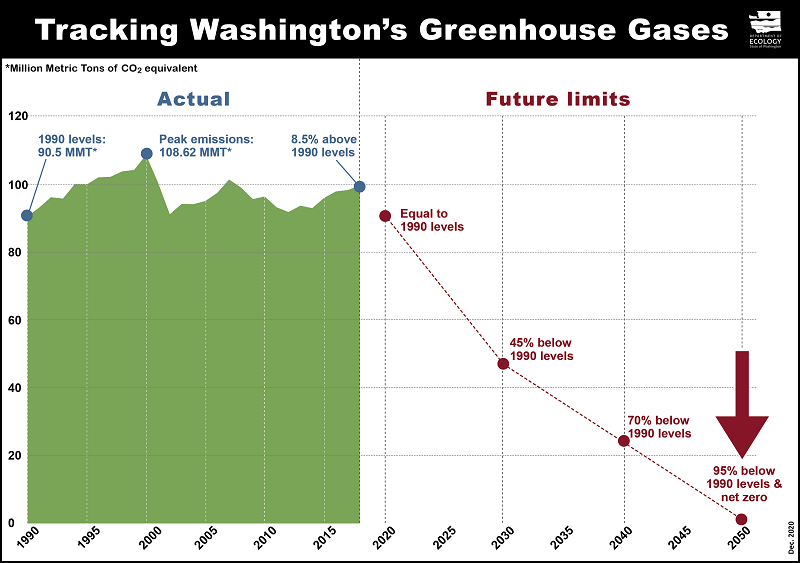
Since 2019, Gov. Jay Inslee and the Washington Legislature have:
- Required all electricity used in Washington to come from sources that emit no greenhouse gases by 2045.
- Required statewide greenhouse gas emissions to be reduced 95% by 2045 — and for the remaining 5% of emissions to be offset.
- Passed a zero emission vehicle standard that requires an increasing number of vehicles sold in Washington to be emissions-free.
- Phased out many uses of the chemicals known as hydrofluorocarbons, which are potent greenhouse gases hundreds or thousands times as powerful as climate dioxide.
- Set a clean fuel standard that calls for reducing the carbon intensity of transportation fuels by 20% by 2038.
- And last but certainly not least, passed the Climate Commitment Act — a comprehensive greenhouse gas reduction program that sets a statewide cap on most sources of emissions, and then reduces that cap over time to match the emission limits set in state law.
It’s clearly been a busy few years for big moves on climate in Washington.
The good news is that all of these new laws and programs will put Washington very close to meeting statewide greenhouse gas limits at least through 2030.
But we understand that if you’re just an ordinary person going about your life, you could probably use some help wrapping your mind around all of these new policies, how they work together, and what they mean for the state.
Well, if you’ve got half-an-hour at lunchtime Nov. 3 or just after work Nov. 10, we’ve got a climate policy 101 webinar to explain the basics to you.
“Understanding Washington’s Climate Policies” will:
- Remind everyone why climate change is such a big concern here in Washington.
- Take a look at what other states and countries are doing to address greenhouse gas emissions in their territories.
- Look at Washington’s climate policies and how they work together to reduce greenhouse gas emissions.
- Dig a little more into the big policies passed this year: The Climate Commitment Act and the Clean Fuel Standard — and explain how you can help to shape those new programs.
It’s a lot to cover in half an hour, so we may have to talk fast. There will not be a test at the end, but our team will stick around to answer a few questions.
So, if you want to learn more about what we’re doing on climate, please join us:

